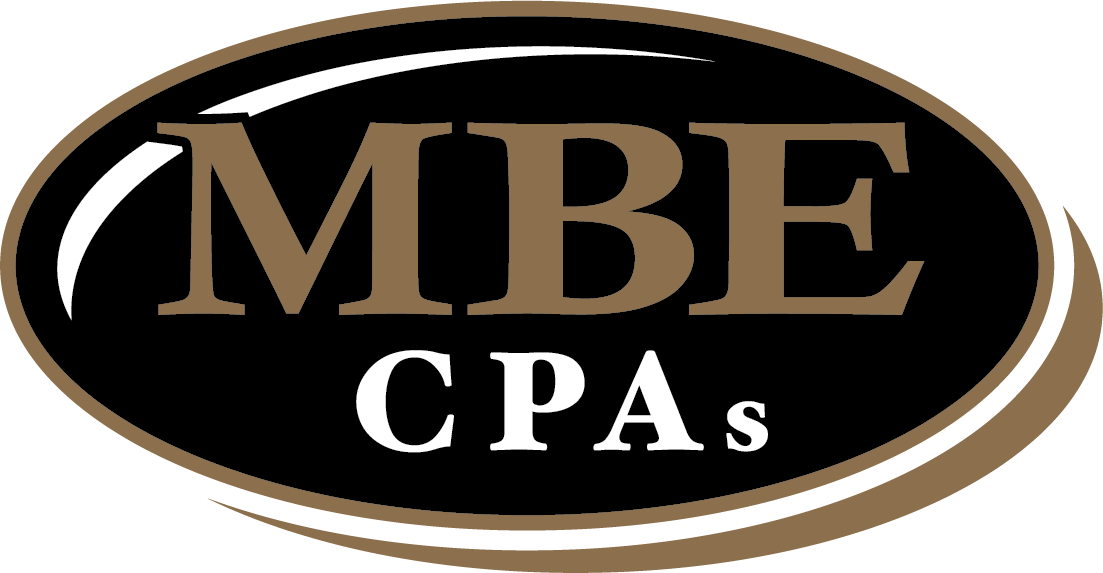What You Should Know About Excess Business Losses in 2025

Authored by: Ryan Weber — Partner, CPA, CVA | Date Published: September 9, 2025
If you’re a business owner, there’s a tax rule you need to know about, and it could be costing you money. The Excess Business Loss (EBL) limitation might sound like boring tax jargon, but it’s actually a big deal that affects real business owners every day. Whether you run a pass-through business or work as a sole proprietor, this rule can throw a wrench in your tax planning and hit your wallet harder than you’d expect. Here’s the thing: most business owners don’t even know this limitation exists until tax time, when it’s often too late to do anything about it. You don’t want to be caught off guard.
This guide breaks down everything you need to know about the EBL limitation. You’ll learn how it works, how to calculate it, and which types of businesses get hit the hardest. Armed with this knowledge, you can make smarter decisions and keep more of your hard-earned money in your business.
Featured Topics:
What Is the Excess Business Loss Limitation?
The Excess Business Loss (EBL) limitation is an important tax rule for small business owners and other non-corporate taxpayers. This rule prevents you from deducting more than a specific amount of your business losses against your non-business income, such as wages or investment earnings.
Imagine you run a small business – maybe a bakery, consulting firm, or online store. At the end of the year, you add up all the money that came in (your income) and all the money that went out (your expenses like rent, supplies, and equipment). Sometimes, especially in tough years or when you’re starting out, your expenses end up being much higher than your income. This is called a business loss.
Now, here’s where it gets tricky. The government has rules about how much of that loss you can use to reduce your taxes in any given year. Think of it like this: there’s a limit to how much loss the tax system will let you “write off” against your other income (like your spouse’s salary or investment earnings) in a single year.
The Excess Business Loss Rule
When your business losses are really large – bigger than what the government considers reasonable for one year – the extra amount beyond that limit is called an “excess business loss.” The government sets this limit each year, and it goes up slightly with inflation (that’s the “threshold amount adjusted for cost of living”).
What Happens to Those Extra Losses
Here’s the good news: those excess losses don’t just disappear. Instead, they get converted into something called a “net operating loss” or NOL. Think of this like a tax credit that you can save for later. You can carry this NOL forward to future years when your business (hopefully) starts making money, and use it to reduce your taxes then.
Why This Matters for Your Business
This system is actually designed to be fair over the long term. Businesses naturally have ups and downs – some years you lose money, other years you make money. The NOL system lets you smooth out these fluctuations for tax purposes.
How Does the Rule Apply in 2025?
The Excess Business Loss (EBL) limitation for 2025 sets a cap on how much business loss non-corporate taxpayers can deduct on their personal tax return. Its main purpose is to prevent large business losses from offsetting other types of income, such as wages or investment income.
For 2025, the EBL threshold is $313,000 for single filers and $626,000 for married couples filing jointly. If your business losses exceed this limit, you cannot deduct the excess in the current year. Instead, the excess becomes a net operating loss (NOL) carried forward for future use. This limitation targets sole proprietors, partners, and S-corporation shareholders.
Before applying the EBL limitation, you must first determine eligible business loss using the “at-risk” and “passive activity loss” rules. Only after these steps does the EBL limitation apply. Form 461 can be used as the bridge between a taxpayer’s business activities and their personal income tax return.
What are Examples of EBL Calculations?
Understanding the definition and theory behind the excess business loss (EBL) limitation is important, but seeing practical examples makes the concept much clearer. The examples below show how the calculation works for a single taxpayer in 2025, covering situations both with and without an EBL. These illustrations will help you recognize when the rule applies and how it impacts your tax liability.
For example, let’s consider a single taxpayer in 2025:
- Scenario 1: No Excess Business Loss
- Business income: $150,000
- Business deductions: $450,000
- Aggregate business loss: $300,000 ($450,000 – $150,000)
- In this case, the aggregate business loss of $300,000 is below the $313,000 threshold. Therefore, the taxpayer can deduct the full $300,000 loss in the current year, and there is no EBL.
- Scenario 2: With an Excess Business Loss
- Business income: $100,000
- Business deductions: $420,000
- Aggregate business loss: $320,000 ($420,000 – $100,000)
- Here, the aggregate business loss of $320,000 exceeds the $313,000 threshold. The EBL is the amount over the threshold: $7,000 ($320,000 – $313,000). The taxpayer can only deduct $313,000 of the loss in the current year, while the remaining $7,000 is treated as an NOL carryforward. This NOL can then be used to offset future income, though it’s subject to its own limitations, such as only being able to offset up to 80% of taxable income in any given year.

Tax Planning Strategies
Excess business loss limitations make tax planning more complex for owners of pass-through entities. These rules, enacted by the Tax Cuts and Jobs Act of 2017 (TCJA) and extended through 2028, restrict noncorporate taxpayers from offsetting business losses over a certain threshold against other income. As a result, businesses must plan carefully to maximize deductions within these limits.
Intentionally time income and expenses, such as by deferring revenue or accelerating deductions to stay below the annual limitation. Another tactic is to carefully consider the use of depreciation, as opting out of bonus depreciation and spreading deductions over multiple years can help avoid creating a substantial, unusable loss. The disallowed loss is not lost forever; it is carried forward as a net operating loss (NOL) to be used in future tax years. However, this NOL is subject to an 80% taxable income limitation in future years, which can delay its full utilization. Therefore, proactive tax forecasting and consulting with a tax professional is essential for managing deductions and staying compliant.
What Industries Are Most Affected?
The excess business loss limitation disproportionately affects industries with high upfront investments, high operating costs, and significant potential for early losses. This rule targets noncorporate taxpayers, including owners of pass-through entities such as partnerships and S corporations, and especially impacts industries such as:
- Real Estate: The real estate industry is heavily impacted, especially for “real estate professionals.” While they can often use losses to offset other income, substantial deductions from accelerated depreciation (like bonus depreciation) can create losses that exceed the annual threshold. This can result in a large, unusable loss in the current year, which must be carried forward as an NOL.
- Startups and Emerging Companies: Early-stage businesses, such as those in technology, biotech, or manufacturing, often take significant losses while developing products, building infrastructure, and scaling before achieving meaningful revenue. The limitation restricts their ability to use early losses to offset other sources of income, such as investments or a spouse’s salary, which can be crucial to initial funding.
- Farming and Agriculture: This sector faces unpredictable factors like weather and commodity prices that cause volatile income and significant yearly losses. The excess business loss rule limits a farmer’s ability to deduct these losses from non-farm income, impacting overall tax liability and cash flow.
- R&D-Intensive Businesses: Companies investing heavily in research and development often generate large deductions. These deductions may result in tax losses that, for pass-through entities, can be limited by the excess business loss rule.
Conclusion
The excess business loss limitation is a key tax rule that can shape your business’s financial strategy for years. If not properly managed, it can lead to deferred deductions, unexpected tax burdens, and cash flow issues. To keep your tax plan on track, understand these rules, adjust your business activities, and plan for your industry’s challenges.
For personalized advice on how the Excess Business Loss limitation may affect you, contact MBE CPAs. We are ready to help guide you through these rules and optimize your tax strategy for the years ahead.
